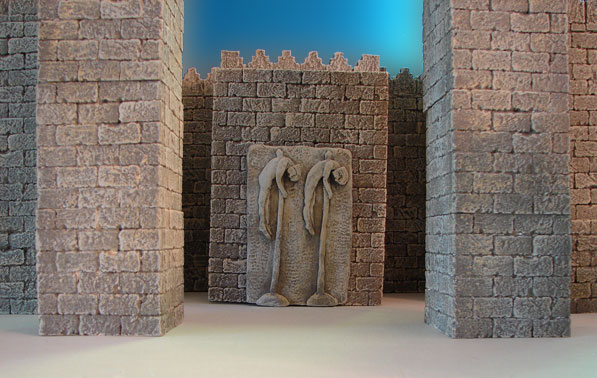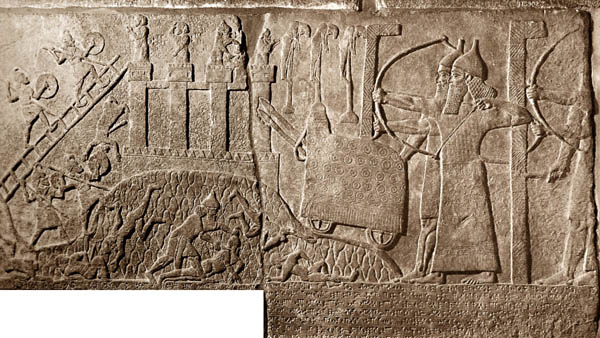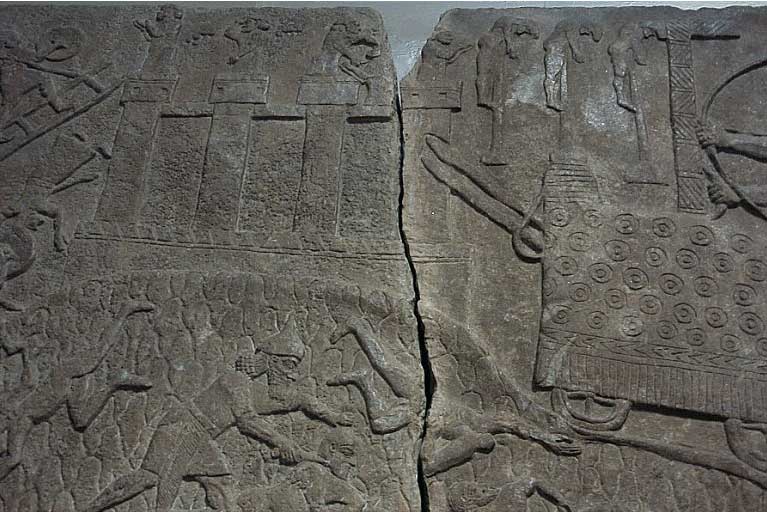


Relief of Siege Scene with Impaled Bodies
Relief of Siege Scene with Battering-Ram and Impaled Bodies, gypsum, Palace of Tiglath-pileser III, Nimrud, h: 91cm
From the Neo-Assyrian Period, 1000 BCE - 612 BCE
Found in Nimrud
Covered in lecture on Sep 23rd, 2004
The Neo-Assyrians often portrayed themselves as ruthless, violent and bloodthirsty in palace reliefs, as the above relief perfectly demonstrates. In the scene, taken from the palace of Tiglath-pileser III (744-727 BCE) at Nimrud, a fierce battle is depicted with a battering ram destroying the sieged city's fortress; Assyrian soldiers slitting the throats of prisoners; and the impaled bodies of the enemy post-battle. In the foreground Assyrian soldiers aim their bows and arrows towards those still remaining alive at the top of the ramparts.
Assyrian archers and a siege engine with a battering ram converge on a walled city. The fortifications are being destroyed as the enemy holds his hands up for mercy. The Assyrian sculptors made great efforts to depict even the most gruesome details of war.
Relief depicting the siege of a fortified city. The iron-clad wooden battering-ram has two beams fitted with iron tips to break bricks from the wall. Behind it, on the wall, is a man pleading for mercy, behind him are naked men impaled on stakes, with fallen soldiers lying in a wooded background. The army commander who wears the sword is firing an arrow, beside him is a large standing shield.
These ancient sculptures with their wealth of detail enable us to see a glimpse into the past and observe the cruelty of the Assyrians who fell upon the northern kingdom, destroying and plundering. An officer in a long coat and a soldier are fighting behind a shield higher than themselves. In front of them a powerful mobile battering ram is being driven up a ramp specially built for an attack on the walls, which it has already breached. In the background three men have been impaled. On the left, soldiers are storming the fortress on scaling ladders.
"And he shall set engines of war against thy walls, and with his axes he shall break down thy towers." - Ezekiel 26:9 (Though this was originally spoken of Nebuchadnezzar of Babylon, it gives us insight into this warfare that was used by the Assyrians.)
"And I will make thee like the top of a rock: thou shalt be [a place] to spread nets upon; thou shalt be built no more: for I the LORD have spoken [it], saith the Lord GOD." - Ezekiel 26:14